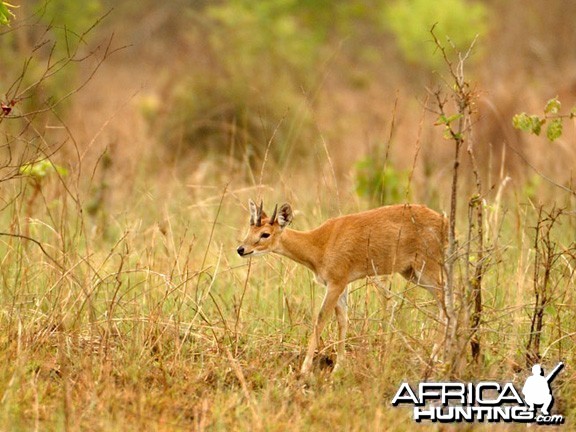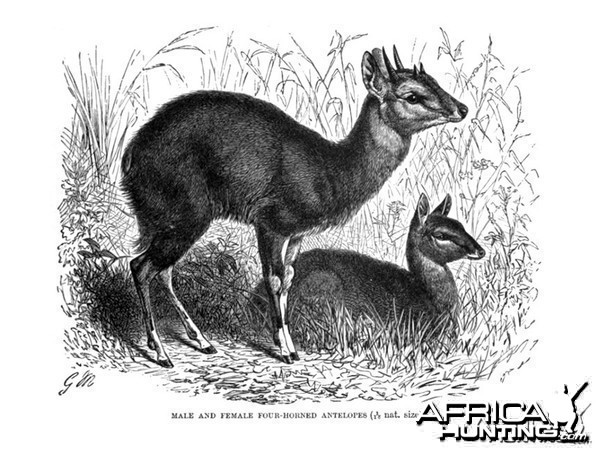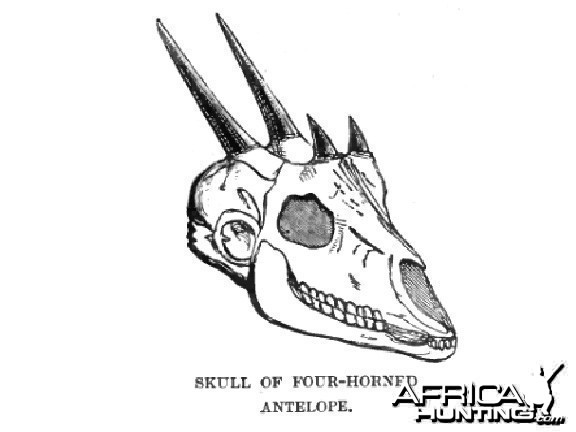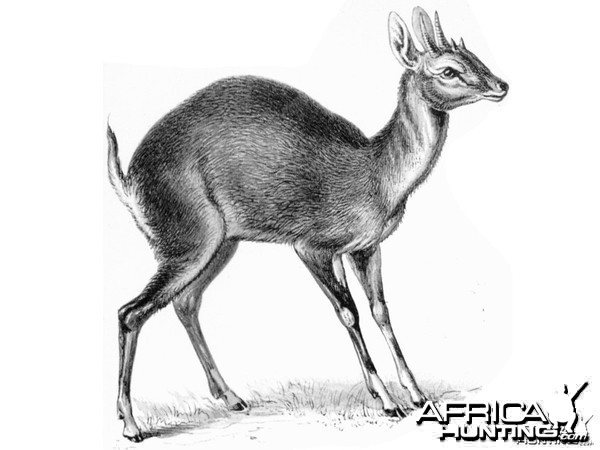monish
AH elite
The Four-horned Antelope, Chousingha, from India
The Four-horned Antelope (Tetracerus quadricornis) also known as the Chousingha is an antelope found in open forest in South Asia. It is the only species currently classified in the genus Tetracerus. Its primary distribution is in India extending South of the Gangetic plains down to the state of Tamilnadu. Orissa constitutes the Eastern boundary of its distribution whereas the fragmented population at Gir is its westernmost distribution. A small population is also found in the drier forests of Nepal. Unique to the Indian subcontinent this interesting antelope is classed as vulnerable to extinction.

Male Four-horned Antelope, Chousingha, from India
Four-horned Antelope stand just over half a metre tall at the shoulder and weigh around 20 kilograms. Four-horned Antelope have a yellow-brown coat with the underside and insides of the legs being white. Its legs are thin and have a black stripe running down the forelegs.

Male and female Four-horned Antelope
Male Four-horned Antelope grow horns. Usually the animal has four; two between the ears and the second pair right on the front of the forehead. The male grows the first pair of horns at a young age of a few months and the second pair of horns indicates age and nutrition inputs to the animal and generally grow at an age of 14 to 15 months. The main pair, found just in front of the ears grow 5 to 12 cm / 2 to 4.8 inches long. Usually there is a second, shorter pair of horns on the foremost part of the forehead, reaching a length of only 2 to 4 cm / 0.8 to 1.6 inches. The horns are never shed, but may get damaged during fights.

Head of male Four-horned Antelope

Skull of male Four-horned Antelope
Four-horned Antelope live in dry deciduous forests and are solitary creatures. Four-horned Antelope are sedentary and may form territories, males tend to become very aggressive towards other males during mating season. Although many people say that these are mute animals, they can be heard while communicating either as an alarm call or to communicate with conspecifics. The call sounds like a husky 'phronk'.

Male Four-horned Antelope also called Chousingha
A shy, wary antelope, the chousingha dashes swiftly for cover at the first sign of danger. The gait of this antelope when walking or running is jerky. The four-horned antelope is rarely found far from a water, and must drink regularly in order to survive. Animals are sedentary, inhabiting more-or-less the same region throughout their lives. Whether territories are formed and defended has yet to be discovered. In the rut, males can be extremely aggressive to members of the same sex. Easily tamed when young, the chousingha is very delicate in captivity. Population densities are usually less then 0.5 animals per square kilometer.
The Four-horned Antelope (Tetracerus quadricornis) also known as the Chousingha is an antelope found in open forest in South Asia. It is the only species currently classified in the genus Tetracerus. Its primary distribution is in India extending South of the Gangetic plains down to the state of Tamilnadu. Orissa constitutes the Eastern boundary of its distribution whereas the fragmented population at Gir is its westernmost distribution. A small population is also found in the drier forests of Nepal. Unique to the Indian subcontinent this interesting antelope is classed as vulnerable to extinction.
Male Four-horned Antelope, Chousingha, from India
Four-horned Antelope stand just over half a metre tall at the shoulder and weigh around 20 kilograms. Four-horned Antelope have a yellow-brown coat with the underside and insides of the legs being white. Its legs are thin and have a black stripe running down the forelegs.
Male and female Four-horned Antelope
Male Four-horned Antelope grow horns. Usually the animal has four; two between the ears and the second pair right on the front of the forehead. The male grows the first pair of horns at a young age of a few months and the second pair of horns indicates age and nutrition inputs to the animal and generally grow at an age of 14 to 15 months. The main pair, found just in front of the ears grow 5 to 12 cm / 2 to 4.8 inches long. Usually there is a second, shorter pair of horns on the foremost part of the forehead, reaching a length of only 2 to 4 cm / 0.8 to 1.6 inches. The horns are never shed, but may get damaged during fights.
Head of male Four-horned Antelope
Skull of male Four-horned Antelope
Four-horned Antelope live in dry deciduous forests and are solitary creatures. Four-horned Antelope are sedentary and may form territories, males tend to become very aggressive towards other males during mating season. Although many people say that these are mute animals, they can be heard while communicating either as an alarm call or to communicate with conspecifics. The call sounds like a husky 'phronk'.
Male Four-horned Antelope also called Chousingha
A shy, wary antelope, the chousingha dashes swiftly for cover at the first sign of danger. The gait of this antelope when walking or running is jerky. The four-horned antelope is rarely found far from a water, and must drink regularly in order to survive. Animals are sedentary, inhabiting more-or-less the same region throughout their lives. Whether territories are formed and defended has yet to be discovered. In the rut, males can be extremely aggressive to members of the same sex. Easily tamed when young, the chousingha is very delicate in captivity. Population densities are usually less then 0.5 animals per square kilometer.
Last edited by a moderator: